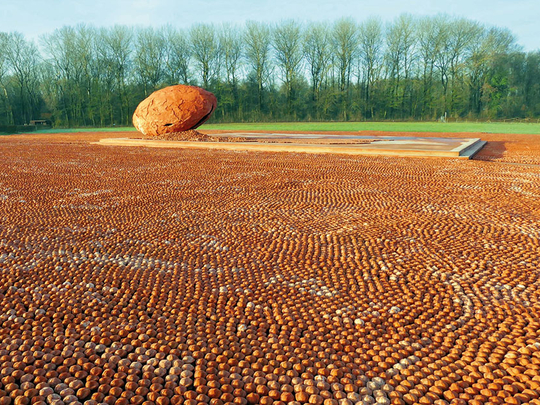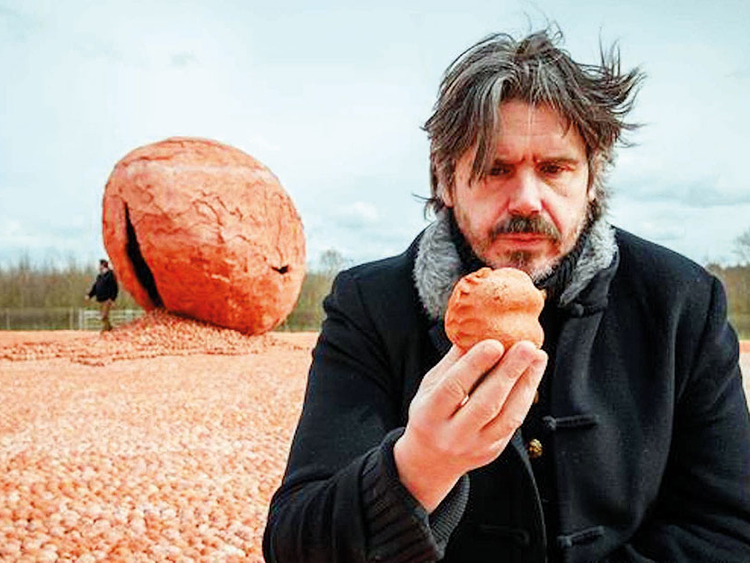
Ypres. It’s a place name that still reverberates throughout the history of this past century. Mud. Barbed wire. Trenches. The absolute futility of men and machines dug in across a no man’s land, killing and slaughtering each other for the gain and loss of yards.
A hundred years ago, across what is now a quiet and forested landscape, the armies of Imperial German and those of Great Britain and France fought long and hard. From the earliest days of that conflict, a war that was supposed to end all wars, the Ypres salient was Hell on Earth.
It was here that British and French troops held a bulge into German lines, and though even overlooked from north, east and south, the line was held at all costs. More than 600,000 men from both opposing armies lost their lives here between October 1914 – shortly after the First World War began – right through to Armistice Day at the eleventh hour on the eleventh day of the eleventh month of 1918.
Yes, there are great granite monuments built to the fallen, listing the names of brothers and fathers who went to serve king and Kaiser, but now there is a new land art installation that pays homage to all those who perished at Ypres – a modern-day reminder of the sheer scale of loss and of the need to remember lest history repeat itself.
It is made up 600,000 individual clay sculptures, one for each of the fallen, and is spread across sever hectares of the parkland that stands in no man’s land. Each was individually crafted by strangers from Belgium, German, the United Kingdom, France and Canada – nations whose soldiers fell there. With each piece, a dog tag – the universal neck identification pieces worn by soldiers – each one bearing the name of a fallen soldier, and each one too bearing the name of the present-day person who moulded the individual miniature sculptures.
“Yes, it is a very tactile process,” Vern Vanmechelen, the artist responsible for the ComingWorldRememberMe creation, tells Weekend Review. “People had to press the clay into the moulds and each one is different. There’s a real connect between the person today who moulded it with each of the soldiers who fell at Ypres. It’s a way of bridging generations and it is was a very moving process to press clay into the mould and form each sculpture.”
The regional government in Flanders was looking for a unique way to remember the First World War, one in which the bloodiest and prolonged fighting in the trenches took place across its area and that bordering on northwest France. From the English Channel to the Swiss Alps, millions of soldiers faced off in the heinous reality of trench warfare, unleashing a frenzy of furious killing unparalleled in history. In effect, the rapid advances in industrialisation and the development of modern methods of warfare – the Maxim machine gun, high-explosive artillery rounds, the development of better targeting systems, the advent of airpower and air-based observation, bigger and more powerful dreadnaught battleships fuelled by coal and then oil – all combined to make men in the front lines more vulnerable as never before. But while the machinery of war had been improved, there was a reality that the tactics of generals and military commanders hadn’t – and they were used to dealing with set-piece confrontation where cavalry played a key role.
Initially, in the first weeks of the First World War, German troops moved through Flanders with relative ease, sacking Ypres initially. They were forced back, and the both sides dug trenches, locked in a bloody standoff where metres gained and lost were counted by the deaths of tens of thousands of German, French and British troops.
Ypres – which British troops pronounced as “Wipers” – came to symbolise the futility and extreme loss of the four-year conflict.
“Certainly, with the events unfolding in Europe and around the world today, there is a feeling by some that a small war might be necessary,” Vanmechelen tells Weekend Review. “We live in a generation in Europe that has not known war, and there is a danger that we are becoming a little complacent.”
Instead, the artist is determined that the sheer size and scale of his work should be a reminder to people of the horrible cost that wars have.
Born in 1965, Vanmechelen’s body pf ground-breaking work deals with biocultural diversity and identity. A central theme to his works, however, is both the chicken and the egg, and he uses both to explore the interplay between art, science and philosophy. His work first gained international recognition with the launch of his Cosmopolitan Chicken Project in the late 1990s, an artistic crossbreeding project, with each successive generation of birds being more resilient, attracting both scientists and bringing community engagement to his work.
His artwork is as diverse and hybrid as the Cosmopolitan Chicken itself, a unique mix of paintings, drawings, photography, innovated 3D-techniques, video, installations and wooden sculptures.
From 2014 through to last March, thousands of people across Europe and North America took part in making the more than 600,000 individual sculptures.
“With our land art installation, we did not only want to create a respectful artistic memory for the victims of the Great War, we also wanted to help,” Vanmechelen says. Those who made the sculptures paid a small sum. “We used half of every participant’s contribution to become a godfather or godmother to provide support for children currently suffering due to war conditions.”
It took seven weeks to put all the individual pieces in place, with all of the godfathers and godmothers invited to help in this phase of the project. More than 4,000 turned out on one day alone to bring this to reality.
Taken together, all of the statues are shaped to represent Pangea, the super-continent of pre-history before the present-day continents on their respective tectonic plates drifted apart. The statues fan out from a platform as a massive human shield in the zone of no man’s land, forming a symbolic boundary on the site where so much inhumane suffering took place a century ago.
At the centre of the platform is a map of the world as it is today, with a giant concrete egg as a metaphor for a world that is constantly expanding and evolving. The sculpture Coming World shows an egg that is on the point of hatching – a precursor to the birth of a new mankind, and one that will hopefully not repeat the horrors of so many deaths on the scale witnessed here between 1914 and 1918.
But now that the sculpture is in place, what happens after the centenary celebrations are over this November?
“There are two thoughts on this,” Vanmechelen tells Weekend Review. “WE had thought to distribute one of the sculptures to every museum and cultural centre across Europe, sending the message out that the horrors of war should never be repeated.”
A second school of thought has arisen following the installation and the sheer impact of the scale of the sculptures all in one place.
“Maybe we should just leave it in place and let the clay sculpture just gradually fade away, which is almost a metaphor for the keeping the memories alive of all those who died.”
Either way, the installation as it stands now is a poignant, evocative and emotional testimony to all those who died here.
Mick O’Reilly is the Gulf News Foreign Correspondent for Europe, based in Madrid.













